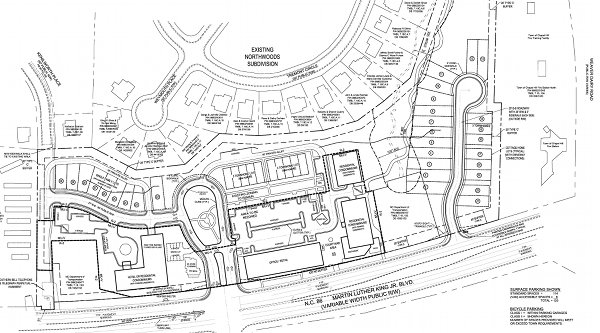[UPDATE] Valerie said she was “appalled” not “ashamed”. Turns out so is the Chapel Hill News.
Tomorrow night Mayor Mark Kleinschmidt will petition his colleagues to appoint a representative to participate in discussions with the County’s Solid Waste Advisory Board (SWAB) on the future of the Interlocal Agreement on Solid Waste Management.
That agreement, coordinating waste management between each municipality and the County, needs to either evolve to meet the changes in our collective waste management plans or face dissolution.
For the good of our wider community, evolution is the better alternative.
Folks might recall that I asked Council several times over the last 6 years to fill the seat set aside on the SWAB for an elected representative from Chapel Hill – even offering to fill that position myself if appointed or elected to Council. Mayor Pro Tem Jim Ward took up that task, finally, less than a year ago.
Last year the Board of Commissioners (BOCC) agreed to ship our waste to Durham’s trash transfer station (which will subsequently ship it elsewhere). Even though this decision laid the groundwork for what I hope is a temporary solution to our garbage disposal needs, the time that decision bought hasn’t been used effectively by the SWAB to plan for the longer term.
There has been no real effort, to date, to find a local or regional solution that aligns more closely to our community’s fiscal and environmental policy objectives. Instead, the County contracted a new waste management consultancy that “discovered” three increased capacity options. Last week the County proposed extending the landfills life, again, irrespective of the commitments made to the Rogers Road community.
Commissioner Valerie Foushee, reviewing her inaction in tasking County staff to work the issue over the last 6 years, said she was “appalled” by the lack of progress – a sentiment echoed by all her colleagues.
Resisting expediency, taking that deceptively easy path of delaying the inevitable yet again, the BOCC finally took the bull by the horns and agreed to forge a solution themselves (Trash Talk: The Neverending Story…Ends?).
As the BOCC and County Manager noted, their partners in the Interlocal agreement have been MIA during the last few years, and though the County preferred a collaborative accommodation, they could no longer delay.
Tomorrow night, Mark moves Chapel Hill one-step closer to being part of the solution rather than the source of the problem:
This petition responds to a request from the Orange County Board of Commissioners for Towns to consider establishing a working group to address and resolve solid waste management issues. The Solid Waste Advisory Board (SWAB) recommends that this working group be comprised of elected officials and senior staff, and that the process should begin as soon as possible.
I wholeheartedly agree and expect the Council to expeditiously move the process forward.
My first suggested action – take advantage of the provision built into the 1997 landfill extension agreement, as County Manager Frank Clifton highlighted last Tuesday, and start setting aside part of the tipping fees for eventual mitigation of landfill related problems.




